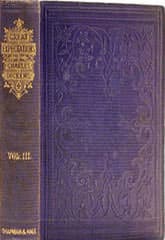Great Expectations
Critique • Other views • Quotes • Text • At the movies
 First edition
First editionFirst publication
1860–1861, serial in All the Year Round periodical
First book publication
1861 in three volumes
Literature form
Novel
Genres
Literary, Gothic romance
Writing language
English
Author's country
England
Length
Approx. 189,000 words

Miss Havisham (Anne Bancroft) takes a spin through the past with Pip inGreat Expectations
Unrealistic expectations
Great Expectations (1998): Film, 111 minutes; director Alfonso Cuarón; writer Mitch Glazer; featuring Ethan Hawke, Gwyneth Paltrow. Robert De Niro, Anne Bancroft
Now here's an idea for making Great Expectations relevant to today's audience: modernize the story. Too bad the 1998 film directed by Alfonso Cuarón fails so badly to accomplish this.
A lot of promising elements are in place here: a good director (he did, arguably, the best Harry Potter film); attractive leads in Ethan Hawke as the Pip-like character and Gwyneth Paltrow as Estella; a stellar supporting cast that includes Robert De Niro as the convict, Chris Cooper as Joe, and a loopy Anne Bancroft as Mrs. Dinsmoor, a southern U.S. take on Miss Havisham; and stylish cinematography.
So why doesn't it work? Possibly because the Dickens story cannot be partially updated. In this telling, the young boy is raised by his sister and fisherman Joe in Florida, where he meets the convict who is an organized crime figure. Somehow it's hard to believe the street-toughened gangster played by De Niro would devote his life to paying back the boy for a small act of kindness given him before he was re-arrested.
Trailer for the 1998 adaptation and update of Great Expectations.
And much as I thoroughly enjoyed Bancroft's old lady, dancing around her decaying mansion declaring "Chick-a-boom", I couldn't really believe in her either. I couldn't believe that a love affair going badly some years ago had turned her into this and had set her about moulding a girl to take revenge on the male sex. Nor could I believe that a lovely little girl like Estella could be raised among those crumbling ruins by such a nutcase.
Then there's the credibility-stretching career of Finn (the Americanized name for the Pip character), who with backing from his secret benefactor goes to New York and conquers the art world, having previously produced little more than some amateurish-looking drawings.
The look of the film is incredible. Director Cuarón creates post-modern style that is spellbinding if you just go with the flow and try not to worry about whether it's all making sense. To tie the plot together, however, voiceovers written by playwright and screenwriter David Mamet are added. I'm not sure they help.
In short, you can't update the story of Great Expectations by finding some modern parallels for the characters, professions and social milieu while keeping the plot and morality that worked so well with nineteenth-century people.
Not that classic works cannot be updated, but in the process of modernizing you have to rethink and rework the whole thing.
— Eric
Critique • Other views • Quotes • Text • At the movies

